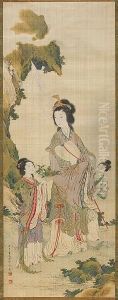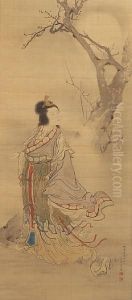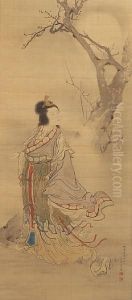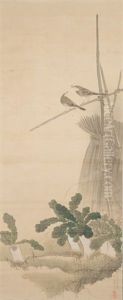Mori Kansai Paintings
Mori Kansai was a prominent Japanese painter and scholar who played a significant role in the art and cultural scene of late Edo and early Meiji periods. Born in 1814 in what is present-day Hyogo Prefecture, Kansai was deeply immersed in the rich traditions of Japanese art from a young age. He was primarily trained in the Shijō school of painting, which is known for its focus on realism and the depiction of nature and everyday life with a delicate and refined touch. However, Kansai's artistic endeavors were not confined to this style alone; he was adept at integrating elements from various other schools and traditions, showcasing his versatility and deep understanding of Japanese art.
Throughout his career, Mori Kansai was deeply influenced by Chinese culture and art, which was a common trend among Japanese intellectuals and artists of his time. He studied Chinese classics and calligraphy, incorporating Chinese techniques and philosophical concepts into his works. This blend of Japanese and Chinese aesthetics allowed him to create unique pieces that were highly appreciated by his contemporaries.
Kansai's contributions to the art world went beyond his paintings. He was an esteemed teacher and mentor to many students, imparting not only his artistic skills but also his knowledge of Chinese literature and philosophy. His influence helped shape the development of Japanese art during a period of significant transition, as Japan opened up to the West during the Meiji Restoration.
The Meiji period brought about dramatic changes in Japanese society, politics, and culture, and Kansai's work reflects this transformation. While he remained rooted in traditional techniques and themes, he was also open to Western influences, which began to permeate Japanese art and culture at the time. This adaptability is seen as a testament to his creative spirit and intellectual curiosity.
Mori Kansai's legacy is preserved through his artworks, which are held in high esteem in museums and collections in Japan and around the world. His life's work serves as a bridge between the Edo and Meiji periods, embodying the continuity and change in Japanese art. Kansai passed away in 1894, but his influence on the world of Japanese art continues to be celebrated to this day.










